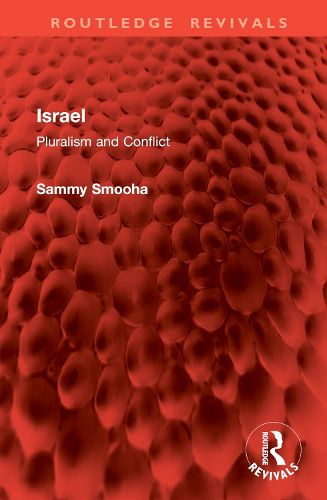Readings Newsletter
Become a Readings Member to make your shopping experience even easier.
Sign in or sign up for free!
You’re not far away from qualifying for FREE standard shipping within Australia
You’ve qualified for FREE standard shipping within Australia
The cart is loading…






First published in 1978, Israel focuses on the pluralistic structure of Israel and its internal conflicts. The author distinguishes five major plural divisions: Palestinian Arabs in the occupied territories versus Israeli citizens; Israeli Arabs versus Jews; Druze versus Christian versus Muslim Arabs; religious versus nonreligious Jews; and non-European versus European Jews. These divisions differ in culture, social structure, and resources, yielding together a social hierarchy which stands in contradiction to the vision of Israel's founding fathers.
From this troubled situation, Dr Smooha suggests that Israel, dominated by a minority of European, predominantly nonreligious Jews, is far from reaching an optimal social mix and group harmony. He observes that, within Israel's pre-1967 borders, the policies of compromise with the religious Jews, control of Israeli Arabs, and co-optation of non-European Jews have failed to resolve the tensions. The threat to national integration, however, will not be realized as long as the Arab Israeli conflict and the benefits of a full-employment, subsidized economy continue. Until then, Israel will remain a highly controversial and deeply divided society.
$9.00 standard shipping within Australia
FREE standard shipping within Australia for orders over $100.00
Express & International shipping calculated at checkout
First published in 1978, Israel focuses on the pluralistic structure of Israel and its internal conflicts. The author distinguishes five major plural divisions: Palestinian Arabs in the occupied territories versus Israeli citizens; Israeli Arabs versus Jews; Druze versus Christian versus Muslim Arabs; religious versus nonreligious Jews; and non-European versus European Jews. These divisions differ in culture, social structure, and resources, yielding together a social hierarchy which stands in contradiction to the vision of Israel's founding fathers.
From this troubled situation, Dr Smooha suggests that Israel, dominated by a minority of European, predominantly nonreligious Jews, is far from reaching an optimal social mix and group harmony. He observes that, within Israel's pre-1967 borders, the policies of compromise with the religious Jews, control of Israeli Arabs, and co-optation of non-European Jews have failed to resolve the tensions. The threat to national integration, however, will not be realized as long as the Arab Israeli conflict and the benefits of a full-employment, subsidized economy continue. Until then, Israel will remain a highly controversial and deeply divided society.